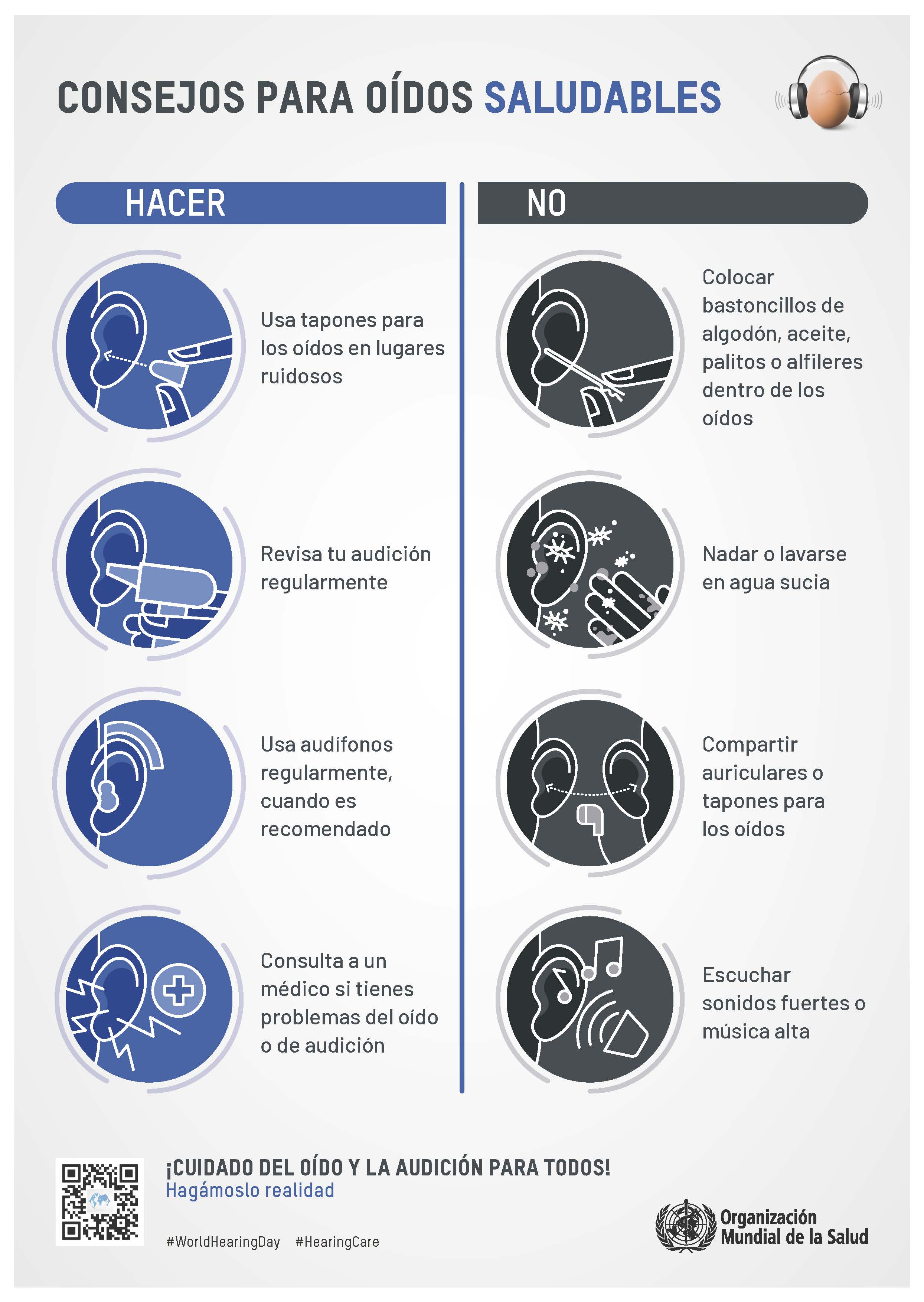The World Hearing Day 2023 focuses on the importance of integrating ear and hearing care into primary care as an essential component of universal health coverage.
On this date, the World Health Organization highlights the following key messages:
- Ear and hearing problems are among the most common problems faced in the community.
- More than 60% of these can be identified and addressed at the primary care level.
- Integration of ear and hearing care into primary care services is possible through training and capacity building at this level.
- Such integration will benefit individuals and help countries move towards the goal of universal health coverage.
In addition, WHO has announced that it will launch the Training Manual on Ear and Hearing Care in Primary Care for Health Workers and General Practitioners. This document will be accompanied by a trainer's manual and other community resources.

Someone is said to have hearing loss ("hypoacusis") when he or she is not able to hear as well as a person whose sense of hearing is normal, that is, whose hearing threshold in both ears is equal to or better than 20 db. Hearing loss can be mild, moderate, severe or profound, and can affect one or both ears. The main causes of this disorder may be congenital or acquired in early childhood; chronic middle ear infections; noise-induced hearing loss, age-related hearing loss, or hearing loss due to ototoxic drugs that damage the inner ear.
The consequences of hearing loss are wide-ranging and can be profound. They include loss of the ability to communicate with others; delayed language development in children, which can lead to social isolation; feelings of loneliness and frustration, particularly in the elderly.
Deafness and hearing loss are widespread in all regions and countries of the world. An estimated 466 million people worldwide (5% of the population) suffer from disabling hearing loss, and that number is expected to increase to 900 million by 2050.
More than 1.5 billion people worldwide experience some degree of hearing loss. Of these, an estimated 430 million have hearing loss of moderate or greater severity in the better-hearing ear.
In addition, 34 million children suffer from deafness or hearing loss due, in 60 % of cases, to preventable causes. At the other end of the spectrum, about one third of people over 65 are affected by disabling hearing loss, most of them in the South Asia, Asia-Pacific and sub-Saharan Africa regions.
In the Region of the Americas,about 217 million people live with hearing loss, or 21.52% of the population. By 2050, this number is expected to increase to 322 million. Most people with hearing loss do not have access to interventions. Untreated hearing loss has a far-reaching impact on the lives of affected individuals and their families. On a social level, it represents an annual cost of $262 million in the region. Therefore, urgent action is needed to prevent and address hearing loss in order to mitigate its adverse impact at all stages of life. An individual's hearing trajectory throughout his or her life determines his or her hearing ability at any point in time.
Many of the consequences of hearing loss can be mitigated through early detection and intervention. This includes special education programs and sign language instruction for young children and their families. Support technologies, e.g., hearing aids, cochlear implants, captioning, and other resources, can help people with hearing loss of any age. Individuals can also be supported through speech therapy, hearing rehabilitation and other related services.
Low- and middle-income countries bear a disproportionate burden of disease due to hearing loss. WHO estimates that global production of hearing aids meets only 3% of the demand in these countries.
With information from WHO.
By: MSc. Dra. Patricia Alonso Galbán
Communication Specialist of CSMC, S.A.